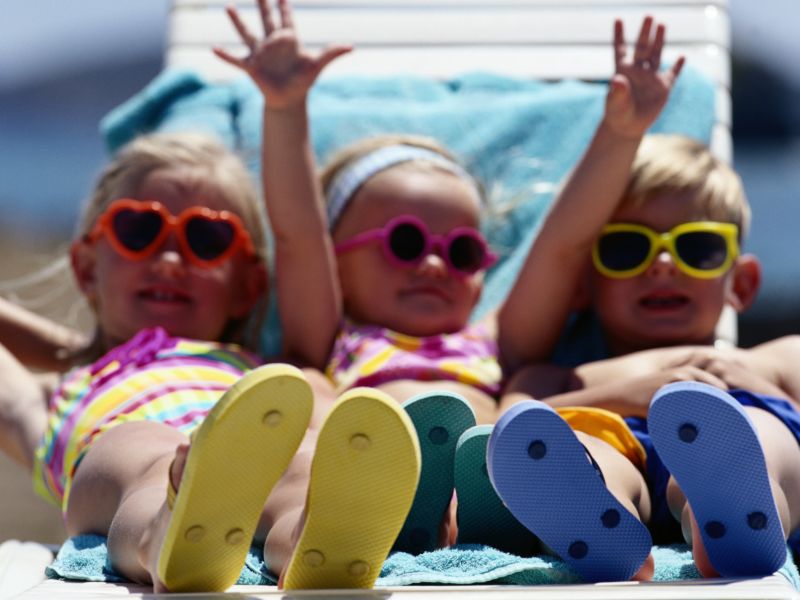
Summer sun and warmer temps may provide plenty of play opportunities for kids, but they also mean parents need to be extra vigilant about preventing sunburns and other mishaps.
The American Academy of Pediatrics offers this advice:
Sun safety through the ages
Avoid sun exposure when possible for babies under 6 months old. Look for shade and dress your child in lightweight long pants, long-sleeved shirts and hats with brims if you can. Sunscreen with an SPF (sun protection factor) of at least 15 can be applied to limited areas of the baby’s body, such as the face and back of the hands.
Cool compresses can be helpful if a baby develops a sunburn.
For older children, the best way to prevent sun damage is also to avoid exposure. Shade is helpful, and so is limiting exposure during the hours of 10 a.m. and 4 p.m., when the likelihood of sunburn is especially high.
Hats with 3-inch brims or bills facing forward are helpful, as are sunglasses that provide 97 percent to 100 percent protection from both UVA and UVB rays.
Clothing with tight weaves can also protect against the sun.
Just as for babies, sunscreen with an SPF of 15 or higher can help prevent burns in children. Teens and young adults should use about one ounce per application and use sunscreen on both sunny and cloudy days.
Make sure children apply sunscreen every two hours and after they swim or sweat. Be aware that water and sand can reflect UV rays and boost the risk of sun damage.
To prevent heat-related problems, limit activities that last 15 minutes or more when it’s very hot or humid. Make sure children stay hydrated and don’t get thirsty: Water is OK if they’re going to be active for less than an hour. If active for more than an hour, make sure they drink water or a sports drink every 20 minutes.
If you just moved to a warmer climate, give your children a week or two to acclimate to the heat, especially if it’s humid.
Children should wear light-colored and lightweight clothing with just one layer of absorbent material to help sweat evaporate. Replace shirts if they’re saturated by sweat.
Take extra care around the car
Infants and small children can’t regulate their body temperature in the same way that adults do. Every year, children die from heat stroke from being left in a hot car, with the majority of these deaths occurring in children 3 and under.
Don’t ever leave a child in a car, according to the AAP.
When you’re finished driving, always make sure children are out of your vehicle and not in danger of overheating inside. It may be helpful to leave a cellphone, bag or purse in the back seat so you automatically look there when you get out of the car. Lock car doors when you get out so kids can’t go inside when an adult isn’t there.
Summertime often means more unsupervised time
Be aware that changes in your routine might throw you off, making it more important that you pay close attention to where the children are and where they’re supposed to be. If a child doesn’t show up at a designated location within 10 minutes of an expected arrival time, make a call to check on their whereabouts.
More information
For more on summer safety for kids, try the U.S. Centers for Disease Control and Prevention.
Source: HealthDay

Leave a Reply